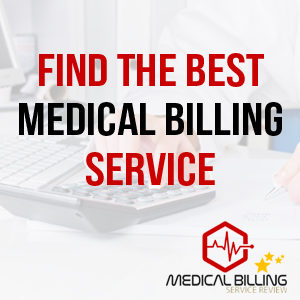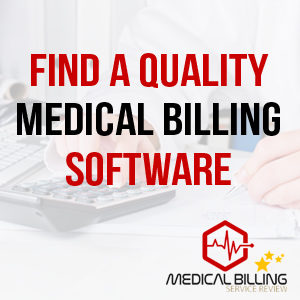
How to Find Easy to Use Medical Billing Software in 2024
In the evolving landscape of healthcare management, medical billing software stands as a cornerstone, streamlining the intricate processes of billing and claims management. As we step further into 2024, the emphasis on technological solutions to enhance efficiency, reduce errors, and improve patient care has never been greater. Amidst a plethora of options, finding easy-to-use medical billing software becomes paramount for healthcare providers aiming to navigate the complexities of billing and insurance processes seamlessly.
The right medical billing software simplifies operations, allowing healthcare professionals to focus more on patient care and less on administrative tasks. However, with the myriad of software options available, each boasting a range of features and capabilities, pinpointing the one that aligns with a healthcare practice’s specific needs poses a significant challenge. This blog aims to demystify the process, guiding you through understanding how medical billing software works, the critical importance of ease of use, and what criteria to consider when selecting the perfect solution for your practice.
In the following sections, we’ll delve into the operational workings of medical billing software, explore why user-friendliness is a crucial factor, outline key features to look for, and compare some of the top medical billing software in the market as of 2024. By the end, you’ll be equipped with the knowledge to make an informed decision that will enhance your practice’s billing efficiency and overall operational effectiveness.

How Medical Billing Software Works
Medical billing software serves as the backbone of financial transactions within healthcare settings, bridging the gap between care provision and revenue cycle management. This sophisticated technology automates and streamlines the billing process, from patient check-in to the final settlement of accounts. Understanding its workflow illuminates the pivotal role this software plays in healthcare operations.
Patient Check-In and Registration: The journey begins when a patient checks in, providing their personal and insurance information, which is entered into the billing system. This step ensures that all subsequent billing and claims processing is based on accurate and comprehensive data.
Service Documentation and Coding: After the patient receives medical services, the details of these services, including diagnoses and procedures performed, are documented. Medical billing software then assigns the appropriate codes for these services, which are crucial for insurance claims and billing. This coding process adheres to standardized systems, such as ICD-10 for diagnoses and CPT for procedures, ensuring consistency and accuracy in billing.
Claim Submission: The software generates insurance claims based on the coded services and submits them electronically to the respective payers. This automation significantly reduces the processing time and potential errors associated with manual submissions.
Payment Posting and Reconciliation: Once a claim is processed, the payer sends a payment or denial notice. The software automatically updates patient accounts with payment information, applies adjustments, and reconciles accounts, facilitating a seamless financial workflow.
Patient Billing: For amounts not covered by insurance, such as co-pays or deductibles, the software generates patient bills or statements. These can be customized and automatically sent out, ensuring timely notifications and facilitating patient payments.
Reporting and Analysis: Beyond processing transactions, medical billing software offers robust reporting and analysis tools. These features provide insights into financial performance, payer trends, and operational efficiency, enabling practices to make informed decisions and optimize their financial health.
The functionality of medical billing software, spanning from initial patient interaction to comprehensive financial reporting, underscores its integral role in the efficient management of healthcare practices. Its ability to automate complex processes not only enhances operational efficiency but also ensures accuracy and compliance with ever-evolving healthcare regulations.

Why Does Ease of Use Matter?
The complexity of medical billing underscores the necessity for software that is not only powerful but also user-friendly. Ease of use matters immensely for several reasons:
Efficiency and Accuracy: User-friendly software streamlines billing processes, making it easier for staff to complete tasks quickly and correctly. Simplified data entry and intuitive navigation reduce the risk of errors, which can lead to claim rejections or delays in payment.
Training Time and Costs: Implementing new software can disrupt operations and involve significant training time. Easy-to-use software requires less extensive training, allowing staff to become proficient more rapidly and reducing the costs associated with learning new systems.
Staff Satisfaction and Retention: Software that is cumbersome or difficult to use can lead to frustration among staff, impacting job satisfaction and potentially leading to higher turnover rates. In contrast, user-friendly software can improve morale and help retain skilled staff.
Patient Satisfaction: The efficiency gained from easy-to-use software indirectly benefits patients. Faster billing processes and accurate claims mean quicker resolution of accounts and less time spent by patients dealing with billing issues.
The ease of use of medical billing software has a direct impact on a practice’s operational efficiency, cost management, staff satisfaction, and ultimately, patient care and satisfaction.
What to Look for When Selecting a Software
Selecting the right medical billing software is a decision that impacts nearly every aspect of a healthcare practice’s operations. Given the importance of ease of use, here are key features and considerations to guide your selection:
- User Interface and Navigability: The interface should be intuitive, clean, and straightforward, allowing users to navigate the system easily without extensive training. Look for software that provides a logical flow of tasks and easy access to frequently used features.
- Integration Capabilities with Other Systems: Seamless integration with existing Electronic Health Records (EHR) systems, accounting software, and other healthcare management tools is crucial. This interoperability ensures that data flows smoothly across systems, minimizing manual data entry and the potential for errors.
- Compliance and Security Features: With the increasing focus on patient data privacy, selecting software that is compliant with HIPAA and other regulatory standards is non-negotiable. Ensure the software has robust security measures in place to protect sensitive information.
- Customization and Scalability: Every healthcare practice has unique needs. The software should offer customization options that allow you to tailor it to your specific billing, coding, and reporting requirements. Additionally, consider whether the software can scale with your practice as it grows, both in terms of functionality and user capacity.
- Support and Training Resources: Assess the level of support and training the software provider offers. Comprehensive support, including live assistance, extensive documentation, and training modules, can significantly ease the software implementation process and ongoing use.
- Reviewing User Feedback and Software Updates: Before making a decision, research user reviews to understand others’ experiences with the software. Also, check how frequently the provider releases updates and whether these updates address user feedback and adapt to changing regulations.
- Cost-Effectiveness: Finally, weigh the software’s cost against its benefits. Consider not only the upfront costs but also any ongoing fees for support, updates, and additional services. The most expensive option is not always the best, nor is the cheapest always the most cost-effective in the long run.
Taking the time to evaluate medical billing software based on these criteria will help you select a solution that enhances operational efficiency, complies with legal standards, and ultimately improves patient care.

Comparing Top Medical Billing Software in 2024
The landscape of medical billing software is vast and varied, with several standout solutions offering unique advantages for healthcare practices. Here’s a comparative look at some of the best medical billing service platforms:
Kareo Billing: Kareo is celebrated for its user-friendly interface and comprehensive feature set, designed specifically for small to medium-sized practices. It integrates seamlessly with Kareo’s own EHR system, as well as with other clinical workflows, making it a versatile choice for practices prioritizing ease of use and integration.
Athenahealth: Athenahealth’s cloud-based service is known for its robust reporting capabilities and proactive compliance updates. Its networked approach connects healthcare providers with payer insights and best practices, enhancing the billing process’s efficiency and accuracy.
AdvancedMD: This software is a great option for practices seeking extensive support and training resources. AdvancedMD offers a fully integrated suite for practice management, EHR, and medical billing, supported by a comprehensive online learning center and a responsive support team.
DrChrono: DrChrono shines in terms of customization and mobile accessibility. Its billing solution is highly adaptable, allowing practices to tailor workflows, reports, and billing rules to fit their specific needs. The mobile app enhances accessibility, enabling billing management on the go.
Greenway Health’s Intergy: Ideal for growing practices, Greenway Health’s Intergy offers scalability and flexibility. Its customizable dashboard and detailed analytics help practices manage their growth efficiently, with cloud-based and on-premise deployment options available.

When evaluating these options, consider the specific requirements of your practice, including the size, specialty, and existing software ecosystem. Utilizing free trials or demos where available can provide valuable insights into how well a particular solution aligns with your needs. Choosing the right medical billing software is a strategic decision that can significantly impact the operational efficiency and financial health of your practice. The platforms highlighted here represent some of the best in the industry, each with its strengths and specialties. By focusing on key selection criteria such as ease of use, integration capabilities, and compliance features, you can find a solution that not only meets your current needs but is also poised to grow with your practice.
In the fast-evolving healthcare industry, finding easy-to-use medical billing software is crucial for streamlining operations, ensuring compliance, and enhancing patient satisfaction. As we’ve explored, the right software can significantly impact a practice’s efficiency and financial health. When selecting medical billing software, prioritize ease of use, integration capabilities, compliance features, and the level of support provided. Considering these factors will help you choose a solution that not only meets your current needs but also grows with your practice.
In 2024, with advancements in technology and increasing demands for efficient healthcare delivery, investing in the right medical billing software is more important than ever. By comparing top software options and considering the specific needs of your practice, you can select a system that optimizes your billing processes, reduces administrative burdens, and allows you to focus on providing excellent patient care.
Remember, the goal is to find a solution that complements your workflow, enhances efficiency, and ensures financial stability for your practice. With the insights and comparisons provided in this blog, you’re well-equipped to make an informed decision that will benefit your practice for years to come.
Author: Mike Cynar
Mike Cynar brings buyers and sellers together by producing reviews and creating non biased webpages allowing users to share their experiences on various products and services. He and his staff write informative articles related to the medical field, legal, and other small business industries.

Leave a Reply